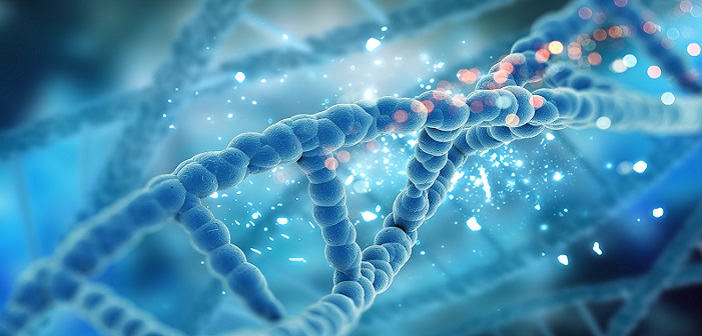Mutations are an important object of study for cytogenetics and biochemists. It is mutations, gene or chromosomal, that are most often the cause of hereditary diseases. Under natural conditions, chromosomal rearrangements occur very rarely. Mutations caused by chemicals, biological mutagens, or physical factors, such as ionizing radiation, are often the cause of congenital malformations and malignancies.
Mutational Overview
Hugo de Vries defined the mutation as a sudden change in hereditary trait. This phenomenon is found in the genome of all living organisms, from bacteria to humans. Under normal conditions, mutations in nucleic acids are very rare, with a frequency of about 1 · 10 –4 - 1 · 10 –10 .
Depending on the amount of genetic material affected by the changes, mutations are divided into genomic, chromosomal and gene. Genomic ones are associated with a change in the number of chromosomes (monosomy, trisomy, tetrasomy); chromosomes are associated with changes in the structure of individual chromosomes (deletions, duplications, translocations); gene mutations affect a single gene. If a mutation affects only one pair of nucleotides, then it is a point.
Depending on the causes that caused them, spontaneous and induced mutations are isolated.
Spontaneous mutations
Spontaneous mutations occur in the body under the influence of internal factors. Spontaneous mutations are considered normal, they rarely lead to serious consequences for the body. Most often, such rearrangements occur within the same gene, are associated with the replacement of the bases - purine with another purine (transition), or purine with pyrimidine (transversion).
Much less frequently, spontaneous mutations occur on chromosomes. Usually, spontaneous chromosome mutations are represented by translocations (the transition of one or more genes of one chromosome to another) and inversions (a change in the sequence of genes on the chromosome).
Induced adjustment
Induced mutations occur in the cells of the body under the influence of chemicals, radiation or the replication material of viruses. Such mutations occur more often than spontaneous, have more serious consequences. They affect individual genes and groups of genes, blocking the synthesis of individual proteins. Induced mutations often globally affect the genome, it is under the influence of mutagens that abnormal chromosomes appear in the cell: isochromosomes, ring chromosomes, dicentrics.
Mutagens, in addition to chromosomal rearrangements, cause DNA damage: double-strand breaks, the formation of DNA cross-links.
Examples of chemical mutagens
Chemical mutagens include nitrates, nitrites, analogues of nitrogenous bases, nitrous acid, pesticides, hydroxylamine, and some food additives.
Nitrous acid causes the amino group to split off from the nitrogenous bases and replace them with another group. This leads to point mutations. Chemically induced mutations also cause hydroxylamine.
Large doses of nitrates and nitrites increase the risk of cancer. Some food additives cause nucleic acid arylation reactions, which disrupt transcription and translation processes.
Chemical mutagens are very diverse. Often these substances cause induced mutations in the chromosomes.
Physical mutagens
Physical mutagens include ionizing radiation, especially short-wave radiation, and ultraviolet radiation. Ultraviolet starts the process of lipid peroxidation in membranes, provokes the formation of various defects in DNA.
X-ray and gamma radiation provoke mutations at the level of chromosomes. Such cells are not capable of division, they die during apoptosis. Induced mutations can affect individual genes. For example, blocking the genes of tumor suppressors leads to the appearance of tumors.
Examples of induced rearrangements
Examples of induced mutations include various genetic diseases that are more likely to occur in areas susceptible to physical or chemical mutagenic factors. In particular, it is known that in the Indian state of Kerala, where the annual effective dose of ionizing radiation exceeds the norm by 10 times, the frequency of birth of children with Down syndrome (trisomy on the 21st chromosome) is increased. In the Yangjiang District of China, a large amount of radioactive monazite has been detected in the soil. Unstable elements in its composition (cerium, thorium, uranium) decay with the release of gamma rays. The impact of short-wave radiation on the residents of the district led to a large number of births of children with cat scream syndrome (deletion of a large portion of the 8th chromosome), as well as an increased incidence of cancer. Another example: in January 1987, Ukraine recorded a record number of births of children with Down syndrome associated with the Chernobyl accident. In the first trimester of pregnancy, the fetus is most sensitive to the effects of physical and chemical mutagens, because a huge dose of radiation led to an increase in the frequency of chromosomal abnormalities.

One of the most notorious chemical mutagens in history is the sedative Thalidomide, produced in Germany in the 50s of the last century. Taking this drug has led to the birth of many children with a variety of genetic abnormalities.
The method of induced mutations is usually used by scientists to find optimal ways to deal with autoimmune diseases and genetic abnormalities associated with hypersecretion of proteins.